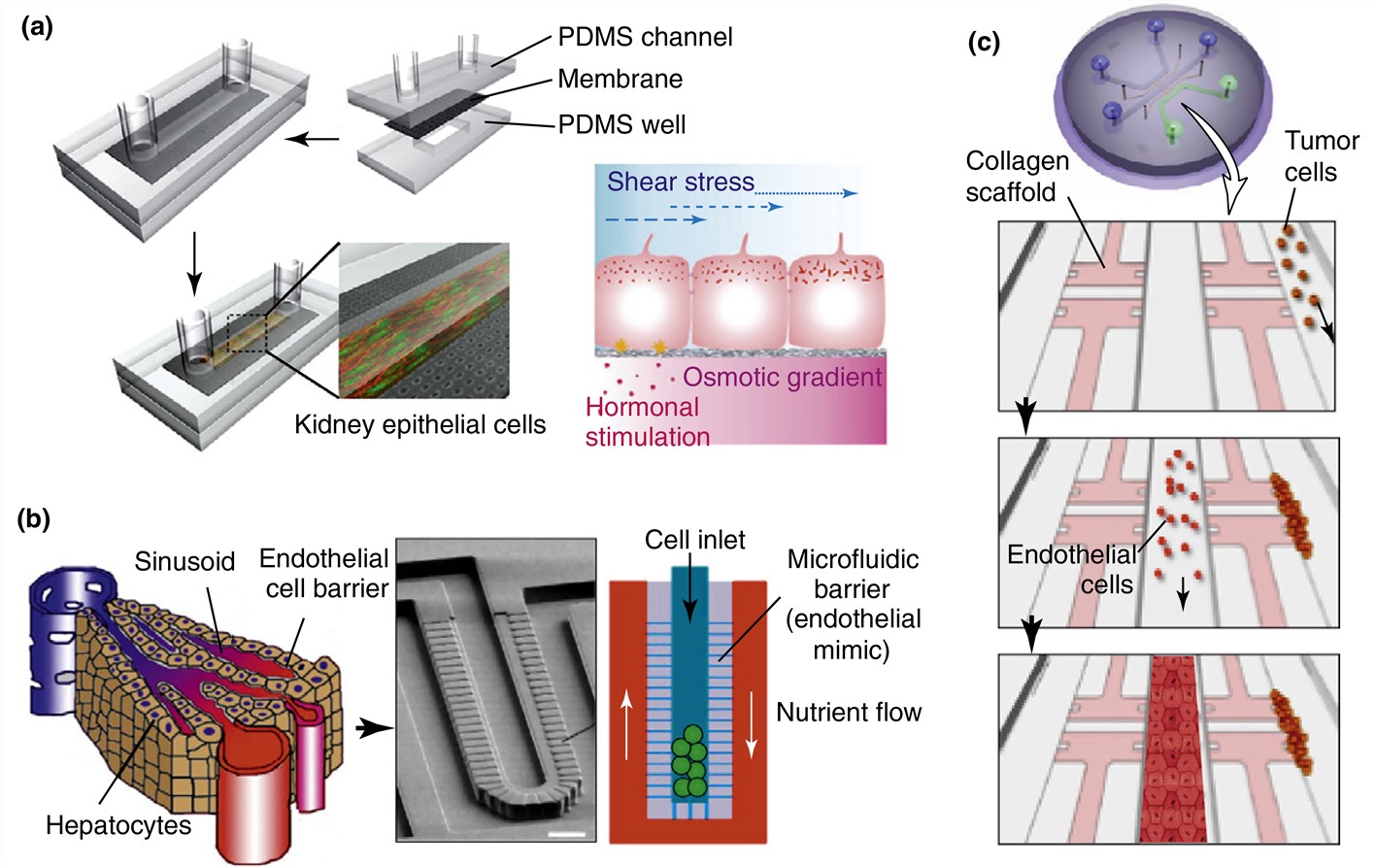Organ-On-A-Chip
The use of in vitro models to truly reflect the effects of drugs on diseases and the various adverse reactions that drugs may have on humans is an important part of developing safe and effective drugs. The organs-on-a-chip is a model that not only simulates the physiological state of human organs but also greatly simplifies the operation process, reduces costs, and saves time. Creative Biolabs has developed a variety of organ-on-a-chip models and offers comprehensive drug evaluation services.
Background
The time and capital cost of successfully developing a safe and effective new drug is enormous. In order to avoid the initial efforts of the previous period in vain, the increased R&D success rate has become an urgent need of major pharmaceutical companies. The key method is to improve the accuracy to predict the human body's responses to drugs before they enter the clinical trial, so as to screen out the project with high risk of failure as soon as possible. To achieve this goal, a reliable preclinical test model must be chosen. The degree of similarity between the selected model and the human body directly affects the accuracy of the research conclusions. Therefore, selecting a suitable model to obtain data that can produce a similar reflection in the human body is a key step in drug development. Animal models are often used in traditional experiments, and animal models are not only time-consuming and labor-intensive, but also have complex ethical problems. The biggest drawback is the inability to accurately simulate human systems. Therefore, using human cells to build models instead of animal models to improve the reliability of the model and the success rate of drug development is the direction that researchers are working hard.
Organ-On-a-Chip
The in vitro culture technique of human cells can simulate the human body more realistically than animal models to a certain extent, but how to establish a similar environment in the human body in vitro is a big challenge. At present, it is still impossible to construct a 100% similar human body model through the existing technology, but the organ-on-a-chip developed by reverse engineering is a relatively new and reliable drug screening test platform.
Organ-on-a-chip is based on Microfluidics, a technology for manipulating and handling trace fluids in micro-pipes with the advantages of miniaturization (below micron grade), integration and automation. Based on this, a three-dimensional model of a target tissue or organ is built in Microfluidics, and human cells are cultured on the model to obtain various human body chips. Currently published organ-on-a-chip models include lung-on-a-chip, vessel-on-a-chip, gut-on-a-chip, heart-on-a-chip, placenta-on-a-chip, eye-on -a-chip, and tumor-on-a-chip. These organ-on-a-chip models not only have the advantages of low cost, high efficiency, and controllability, but also can simulate the microscopic or even smaller three-dimensional environment in the human body, which can significantly improve the accuracy and reliability of drug screening and evaluation.
 Fig.1 Lung-on-a-Chip.1
Fig.1 Lung-on-a-Chip.1
Highlight Features of Organ-On-a-Chip
- Small sample size
- High precision
- Versatility
- Automation
Using the organs-on-a-chip as a model to simulate the authentic physiological state of human cells, tissues or organs is a relatively reliable, low-cost, easy-to-operate, and ethical model. Scientists from Creative Biolabs have developed a rich library of organs-on-a-chip models that basically cover the models needed to screen and evaluate various types of drugs. Based on advanced and reliable organ-on-a-chip models, we are able to provide our clients with comprehensive drug screening and evaluation services including In Vitro pharmacodynamics, pharmacokinetics, In Vitro toxicology, safety pharmacology, etc.
In order to successfully develop drugs that are safe and effective for humans, choosing the right model to simulate the effects of drugs on the human body and the various reactions that the human body may respond to drugs is the general process of developing drugs, so the appropriate model is related to the success or failure of drug development. Creative Biolabs' top team of scientists has extensive experience in model building and drug evaluation, and we have helped drug researchers around the world advance their research processes and save them costs and time.
Reference
- From Wikipedia: By Kbjung. Under Open Access license CC BY-SA 4.0, without modification, https://commons.wikimedia.org/wiki/File:Lung-on-a-Chip_fig2.jpg.
For Research Use Only.
